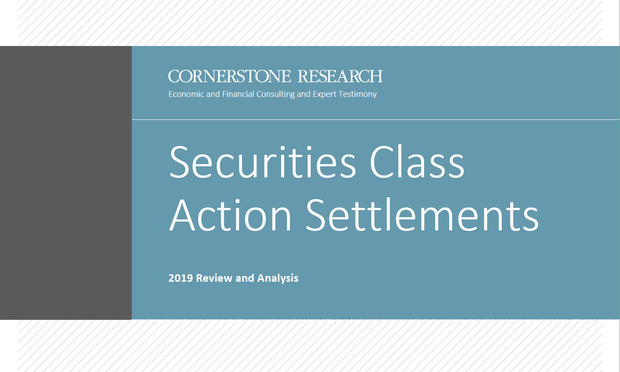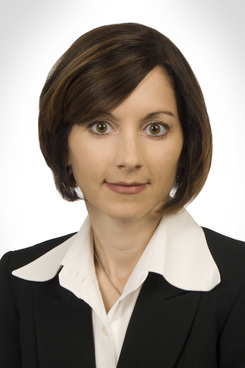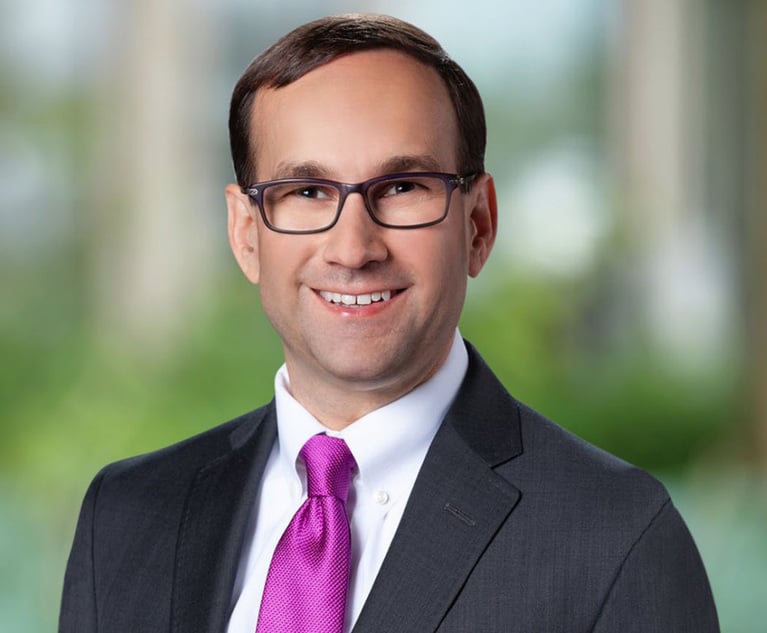Securities Class Actions Hitting Pharma Hardest
"That suggests a real trend here. No longer can we say half of all settlements are less than $10 million, and that can be a concern to general counsel."
February 26, 2020 at 03:50 PM
5 minute read
 Securities Class Action Settlements: 2019 Review and Analysis by Cornerstone Reasearch.
Securities Class Action Settlements: 2019 Review and Analysis by Cornerstone Reasearch.
A new report analyzing 2019 securities litigation suggests the volume of class actions and the size of their settlements will likely continue at high levels in upcoming years, especially in the already hard-hit pharmaceutical sector.
That's the main takeaway for general counsel from the "Securities Class Action Settlements—2019 Review and Analysis," according to Laura Simmons, the report's co-author and a senior research adviser at Cornerstone Research.
The study found that the median settlement value was $11.5 million in calendar year 2019, a 34% jump over the 2010 to 2018 median. It said the settlement value "was driven primarily by an increase in the overall percentage of midsized cases in the $5 million to $25 million range as well as a decrease in the number of smaller settlements."
The overall settlement amount was lower than in 2018, Simmons noted, due to five unusually large cases that year, including the $3 billion deal with Brazilian energy giant Petrobras.
But the median, or typical, case value remained high.
"This is the second year in a row that we've seen a typical case settle at that value," Simmons told Corporate Counsel on Wednesday. "That suggests a real trend here. No longer can we say half of all settlements are less than $10 million, and that can be a concern to general counsel."
Simmons noted that the number of settlements, 74, also continued at a high rate. But it was still less than the 78 tallied in 2018.
 Laura Simmons, Cornerstone Research.
Laura Simmons, Cornerstone Research.She also pointed out a "dramatic increase" in the size of defendants. "It's a result of a combination of the overall size of firms increasing, and then what appears to be plaintiffs targeting larger firms."
Total assets of 2019's defendant firms were more than double the prior 10-year median, according to the report.
Joseph Grundfest, director of the Stanford Law School Securities Class Action Clearinghouse, said in a statement that the continued growth of publicly traded firms "is fueled, at least in part, by a decrease in [initial public offering] activity and an increase in merger activity. This trend, combined with the heightened filing activity against public companies, may contribute to sustained levels of higher settlement amounts."
Laarni Bulan, report co-author and Cornerstone research principal, said in a statement that the larger issuer defendants "may also cause plaintiff firms to pursue potential claims more vigorously. One possible measure of the time and effort by plaintiff counsel is the number of docket entries per case. In 2019, average docket entries were the highest in the last 10 years, primarily driven by cases with relatively large damages."
Simmons also pointed out an increase in settlements despite a substantial reduction in accounting issues. Less than 20% of the cases involved financial restatements, she said, "and those used to be a focus in these cases."
Simmons said it must be alarming for general counsel that companies can assure a good system of accounting practices and internal controls, but if any unexpected event—like a wildfire or a coronavirus—makes stock prices drop, then they can expect plaintiffs to be right there. "The event-driven litigation trend has emerged in recent years," she noted.
One caveat for in-house counsel: don't conclude that accounting isn't important anymore. That's because cases that do involve financial restatements settled for higher amounts than those that didn't.
Simmons said all of the general counsel concerns she discussed were amplified for the pharma sector "because this industry is being targeted."
In 2019 pharma cases reached an all-time high in both the number and percentage of overall cases. Pharma saw 22% of all securities case settlements. "This is a heavy concentration for a single sector," Simmons noted.
Research shows another 34 cases filed recently against pharma defendants, she said, "suggesting that the prevalence of these cases will continue."
Simmons said one finding in the report surprised her: The proportion of settlements in 2019 with a public pension plan as lead plaintiff reached its lowest level in 10 years. Pension funds usually get involved with larger cases, she said, and these class actions have been growing in settlement size.
So why are pension funds backing off? Simmons cited a number of possible factors, including changes in relationships with more and newer plaintiff counsel, and a questioning of the cost-benefit trade-off in serving as lead plaintiff.
In other findings, the report said in 2019:
- Companies that settled cases after a ruling on a motion to dismiss were, on average, 50% larger than companies that settled while the motion was pending, perhaps suggesting that bigger companies are more willing to take risks.
- Some 53% of settled cases involved an accompanying derivative action, the second-highest rate over the past decade.
- There were other signs that plaintiffs are being more aggressive. For example, the length of the class period increased to its highest level over the last 10 years.
This content has been archived. It is available through our partners, LexisNexis® and Bloomberg Law.
To view this content, please continue to their sites.
Not a Lexis Subscriber?
Subscribe Now
Not a Bloomberg Law Subscriber?
Subscribe Now
NOT FOR REPRINT
© 2025 ALM Global, LLC, All Rights Reserved. Request academic re-use from www.copyright.com. All other uses, submit a request to [email protected]. For more information visit Asset & Logo Licensing.
You Might Like
View All

Baker Botts' Biopharma Client Sues Former In-House Attorney, Others Alleging Extortion Scheme

People and Purpose: AbbVie's GC on Leading With Impact and Inspiring Change
7 minute read
Sage Therapeutics Axes GC After Drug-Pipeline Failures Force Cost-Cutting
Trending Stories
- 1Meta Hires Litigation Strategy Chief, Tapping King & Spalding Partner Who Was Senior DOJ Official in First Trump Term
- 2Courts Beginning to Set Standards for Evidence Relying upon Artificial Intelligence
- 3First-Degree Murder Charge May Not Fit Mangione Case
- 4Legal Tech's Predictions for Legal Ops & In-House in 2025
- 5SDNY US Attorney Damian Williams Lands at Paul Weiss
Who Got The Work
Michael G. Bongiorno, Andrew Scott Dulberg and Elizabeth E. Driscoll from Wilmer Cutler Pickering Hale and Dorr have stepped in to represent Symbotic Inc., an A.I.-enabled technology platform that focuses on increasing supply chain efficiency, and other defendants in a pending shareholder derivative lawsuit. The case, filed Oct. 2 in Massachusetts District Court by the Brown Law Firm on behalf of Stephen Austen, accuses certain officers and directors of misleading investors in regard to Symbotic's potential for margin growth by failing to disclose that the company was not equipped to timely deploy its systems or manage expenses through project delays. The case, assigned to U.S. District Judge Nathaniel M. Gorton, is 1:24-cv-12522, Austen v. Cohen et al.
Who Got The Work
Edmund Polubinski and Marie Killmond of Davis Polk & Wardwell have entered appearances for data platform software development company MongoDB and other defendants in a pending shareholder derivative lawsuit. The action, filed Oct. 7 in New York Southern District Court by the Brown Law Firm, accuses the company's directors and/or officers of falsely expressing confidence in the company’s restructuring of its sales incentive plan and downplaying the severity of decreases in its upfront commitments. The case is 1:24-cv-07594, Roy v. Ittycheria et al.
Who Got The Work
Amy O. Bruchs and Kurt F. Ellison of Michael Best & Friedrich have entered appearances for Epic Systems Corp. in a pending employment discrimination lawsuit. The suit was filed Sept. 7 in Wisconsin Western District Court by Levine Eisberner LLC and Siri & Glimstad on behalf of a project manager who claims that he was wrongfully terminated after applying for a religious exemption to the defendant's COVID-19 vaccine mandate. The case, assigned to U.S. Magistrate Judge Anita Marie Boor, is 3:24-cv-00630, Secker, Nathan v. Epic Systems Corporation.
Who Got The Work
David X. Sullivan, Thomas J. Finn and Gregory A. Hall from McCarter & English have entered appearances for Sunrun Installation Services in a pending civil rights lawsuit. The complaint was filed Sept. 4 in Connecticut District Court by attorney Robert M. Berke on behalf of former employee George Edward Steins, who was arrested and charged with employing an unregistered home improvement salesperson. The complaint alleges that had Sunrun informed the Connecticut Department of Consumer Protection that the plaintiff's employment had ended in 2017 and that he no longer held Sunrun's home improvement contractor license, he would not have been hit with charges, which were dismissed in May 2024. The case, assigned to U.S. District Judge Jeffrey A. Meyer, is 3:24-cv-01423, Steins v. Sunrun, Inc. et al.
Who Got The Work
Greenberg Traurig shareholder Joshua L. Raskin has entered an appearance for boohoo.com UK Ltd. in a pending patent infringement lawsuit. The suit, filed Sept. 3 in Texas Eastern District Court by Rozier Hardt McDonough on behalf of Alto Dynamics, asserts five patents related to an online shopping platform. The case, assigned to U.S. District Judge Rodney Gilstrap, is 2:24-cv-00719, Alto Dynamics, LLC v. boohoo.com UK Limited.
Featured Firms
Law Offices of Gary Martin Hays & Associates, P.C.
(470) 294-1674
Law Offices of Mark E. Salomone
(857) 444-6468
Smith & Hassler
(713) 739-1250






